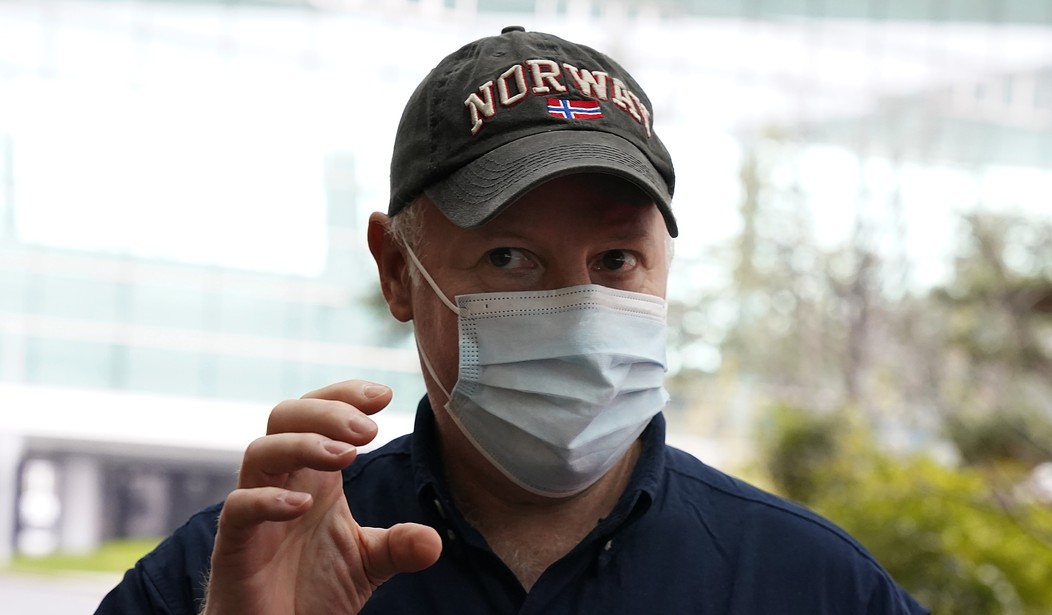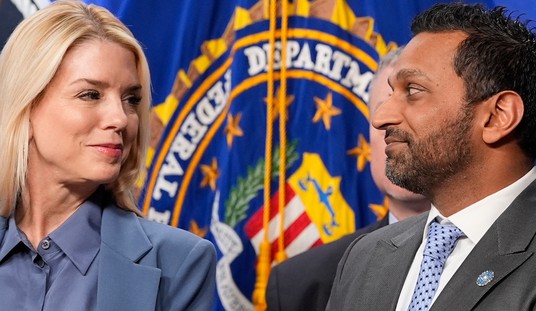A few days ago I wrote about the documents leaked to DRASTIC, the online coronavirus sleuths, which involve proposed coronavirus research in 2018. A group of researchers led by Peter Daszak of the EcoHealthAlliance submitted an application for DARPA funding, the goal of which was to identify dangerous coronaviruses in bats and then attempt to inoculate wild bats against some of those viruses. It was called Project DEFUSE and ultimately DARPA refused to fund it saying it was too dangerous and too close to gain-of-function research.
But the argument made by DRASTIC in their review of the grant application is that, even if DARPA didn’t fund the project it gives us some insight into the kind of research the Wuhan Institute of Virology (WIV) was thinking about doing not long before the start of the pandemic. And ultimately, how do we know the WIV wasn’t doing some of this research on its own with another source of funding?
Yesterday, the Atlantic published a piece about these new documents which states that a natural crossover event is still the preferred explanation for the origin of the pandemic for most scientists, but the new documents, which they have confirmed are real, complicate the picture a bit.
As Allahpundit mentioned yesterday, one of the things lab leak proponents have pointed to for months is the presence of a furin cleavage site on the coronavirus spike protein. That makes the virus unusually well adapted to spread among humans. So the fact that researchers, including the WIV, were talking about artificially adding these sites to existing bat coronaviruses in 2018 could be significant.
The engineering work that it describes would indeed involve such an artificial insertion. We don’t know whether that work was ever carried out—remember, DARPA rejected this proposal. Even if it had been, several experts told us, the genetic engineering would have happened at Ralph Baric’s lab in Chapel Hill, about 8,000 miles away from where the SARS-CoV-2 outbreak started. Yet now we know that the idea of inserting these sites was very much of interest to these research groups in the lead-up to the pandemic. “This is the first time they reveal that they are looking for these sites,” said Alina Chan, a scientist in Boston and a co-author of the forthcoming book Viral: The Search for the Origin of Covid-19.
Stephen Goldstein, a postdoctoral researcher in evolutionary virology at the University of Utah and one of the co-authors of the pandemic-origins critical review, considers it “unlikely” that any such work would have gone forward in Wuhan. It would be unusual—even unethical—for a lab in China to pursue experiments that were originally proposed by one of its collaborators in the United States, he told us.
I found that last bit funny in a dark sort of way. This postdoc researcher, Stephen Goldstein, is arguing that the Chinese lab was too ethical to have proceeded with this research after DARPA rejected funding it. And who knowns, maybe the Chinese researchers are pretty ethical as individuals but in China no one says no to the government or the military. If the military found this research worthy of pursuing, the lab workers would have had no choice in the matter, whether they found it ethical or not. Even Goldstein admits that the fact the WIV was looking at this in 2018 raises important questions that need to be answered.
Still, these scientists agree that the very fact that these experiments were even on the radar raises significant concerns. “I recognize this revelation opens up legitimate lines of questioning that are serious and need to be addressed by the people involved,” Goldstein told us via email. Crits-Christoph told us that it pushed the existing evidence “one step closer to the lab-engineering hypothesis”—but added that, given the improbable timeline, it moved things “one step further as well.”
…other scientists took a different point of view—one less skeptical of the idea that the experiments could have been carried out in China. Jesse Bloom, a computational biologist and expert in viral evolution at the Fred Hutchinson Cancer Research Center, in Seattle, calls the timeline “plausible … certainly possible.” Chan points to other recent reports that the team at the Wuhan Institute of Virology had already been sampling very close relatives to SARS-CoV-2, and that it was testing, in humanized mice, genetically engineered SARS-like coronaviruses that were more infectious than natural strains. “WIV was fully outfitted to run all these experiments themselves,” she says.
The Atlantic concludes that these documents don’t come close to proving the lab leak theory but they do make it somewhat more plausible. And that in itself creates another problem, one involving the credibility of Peter Daszak.
In May 2020, only a few months into the pandemic, EcoHealth’s Peter Daszak ridiculed discussions of the furin cleavage site and whether it might be bioengineered as the ranting of conspiracy theorists. Six months later, Daszak was involved in two major, international investigations into the pandemic’s origins, organized by the World Health Organization and the British medical journal The Lancet. Now it appears that, just a few years earlier, he’d delivered a detailed grant proposal to the U.S. government, with himself as principal investigator, that described doing exactly that bioengineering work. “It’s just shocking,” Chan said.
The pattern here is unmistakable: At every turn, what could be important information has been withheld.
This isn’t even the first time Daszak has been found to be not telling the truth. Daszak was asked several times about why an online database of viruses maintained by the WIV was pulled down in 2019. His response matched that of WIV lead researcher Dr. Shi Zhengli. They both claimed the database was pulled down because it has been the subject of hacking attempts. The implication was that, in the wake of the spread of the virus, people were trying to access the data. However, DRASTIC later revealed that the database had been removed on September 12, 2019, moths before anyone had heard of SARS-CoV2.
So even putting aside the issue of the lab leak, what these new documents show, and not for the first time, is that Peter Daszak can’t be trusted to give full and accurate information. As the Atlantic puts it, “good-faith investigations of these matters have proceeded in the face of a toxic shroud of secrecy.” It’s no surprise that toxic shroud of secrecy is coming from the CCP but it is pretty odd that it’s coming from a leading researcher at the forefront of this investigation.








Join the conversation as a VIP Member